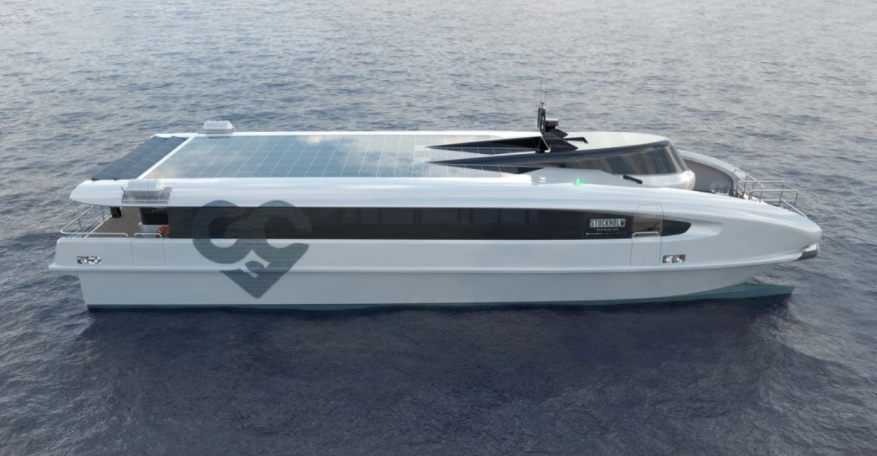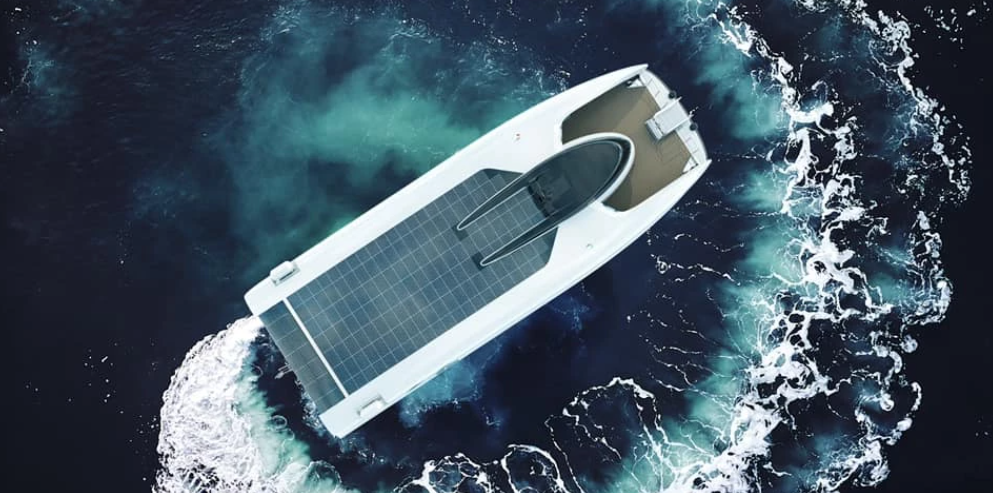
The world’s watercraft that run on petrol and diesel play no small part in air pollution and climate change, and recently we’re seeing how hydrogen could come to offer a more sustainable alternative. Sweden’s Green City Ferries AB is wasting no time exploring these possibilities, placing an order for what is billed as the world’s first high-speed, emission-free catamaran: the Beluga24.
Sweden’s waterways could be set for something of a green makeover if recent developments are anything to go by. Earlier this year, local boatbuilder Candela launched a 30-person foiling vessel billed as the world’s fastest electric passenger ship, designed to displace the diesel ferries in service around the city of Stockholm, and followed it up with a sportier variant with some stunning range figures in July.
As far back as 2014, Green City Ferries AB itself has been looking to shift toward electric vessels for its people-moving operations, introducing a battery-powered vessel developed with Swedish company Echandia. The two have again joined forces on this latest move in eco-friendly marine transport, teaming up with New Zealand’s Teknicraft and Italy’s Studio Sculli to develop the Beluga24.

The catamaran is to be built out of carbon fiber by Green City Ferries in Sweden, and will integrate Echandia’s battery and fuel cell propulsion system, which is claimed to require less hydrogen than standard and therefore offer significant weight savings. The vessel will also feature a foil amidship to lift it out of the water, reducing drag to improve range much like Candela’s offerings.
“Sweden has been lagging behind internationally when it comes to electrifying shipping, but now the pace is increasing here as well,” says Magnus Eriksson, CEO, Echandia. “We are proud to be a part of this project that not only contributes to reducing emissions from Stockholm’s waterborne local transport but is also the first in the world with an emission-free high-speed catamaran. The ferry will be equipped with an integrated system with both batteries and hydrogen, which is significantly more energy efficient compared to solutions with separate systems.”
According to Echandia, Stockholm’s vessels account for five percent of the energy consumption of its public transport, yet around 50 percent of its carbon dioxide emissions each year, so there is a lot to be gained by a shift toward cleaner alternatives. And Stockholm mightn’t be the only place turning to hydrogen as a solution. The Sea Change ferry, which is billed as the world’s first commercial hydrogen fuel cell ferry, is nearing completion and expected to enter operation in San Francisco this year, while another, MF Hydra, could soon set sail in Norway.
Delivery of the Beluga24 is expected to take place in 2022.
Source: Echandia


.png)

